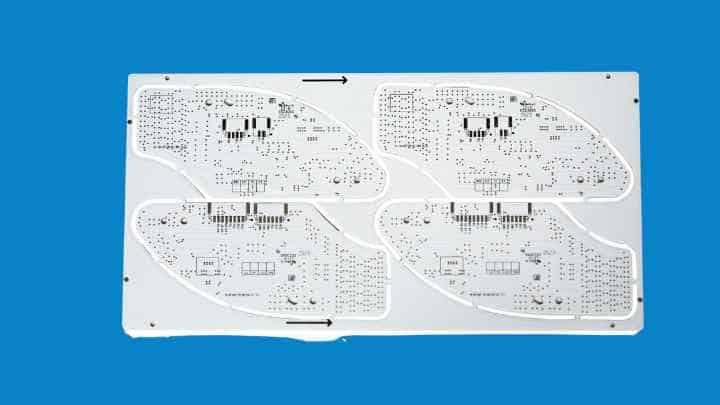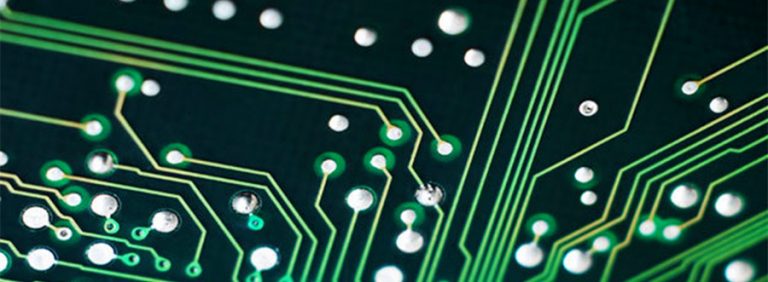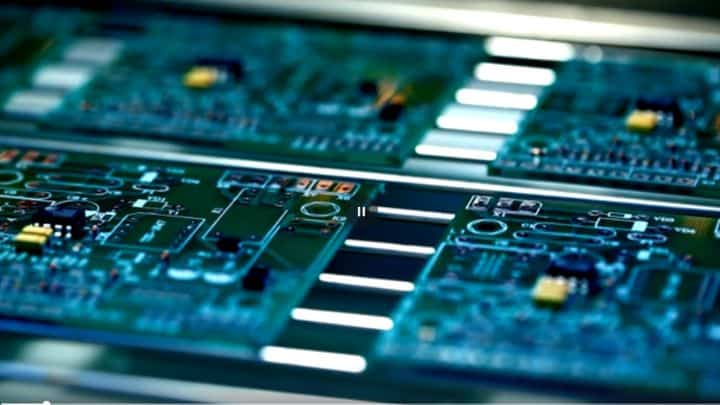5 Reasons Why 2835 LED PCB Aluminum is the Future of Lighting
Imagine crafting luminous projects that captivate the eye, defy limitations, and stand the test of time. With 2835 LED PCB Aluminum, that vision becomes reality. This dynamic duo isn’t just a technical specification; it’s a gateway to a world of creative possibilities and unparalleled performance. Whether you’re illuminating architectural marvels, crafting automotive wonders, or designing industrial marvels, 2835 LED PCB Aluminum empowers you to push boundaries and shine brighter than ever before.
Dive deeper into this remarkable combination and unlock its secrets. We’ll explore the potent synergy of compact, efficient 2835 LEDs with the robust heat-dissipating prowess of aluminum PCB. Uncover the advantages that propel your projects to new heights: superior thermal management, exceptional light output, unwavering reliability, and cost-effectiveness that keeps your wallet smiling.
But that’s just the tip of the iceberg. We’ll delve into diverse applications, from indoor brilliance to outdoor weatherproofing, and unveil expert design considerations to craft your perfect solution. So, buckle up, electronics enthusiasts, and prepare to embark on a journey that illuminates your path with the power of 2835 LED PCB Aluminum!
Demystifying 2835 LED PCB Aluminum: A Powerful Combination
Imagine tiny titans of light, bursting with brilliance yet cool under pressure. That’s the magic of 2835 LEDs, miniature powerhouses packed into a compact 2.8mm x 3.5mm package. But these LEDs crave a stage that can handle their heat and unleash their full potential. Enter aluminum PCB, a robust heat sink hero ready to take center stage. Let’s delve into the dynamic duo of 2835 LED PCB Aluminum and discover why it’s the perfect recipe for your next dazzling electronics project.
3.1 Unveiling the 2835 LED: Compact, Efficient, and Versatile
Think small, think mighty. 2835 LEDs are marvels of miniaturization, offering a punch of light in a footprint smaller than a fingernail. But don’t underestimate their power:
- High Lumen Output: Despite their size, 2835 LEDs boast impressive light output, generating up to 220 lumens per watt (lm/W) – that’s efficient illumination!
- Diverse Color Options: From warm white to cool white, vibrant red to deep blue, 2835 LEDs cater to a spectrum of design needs.
- Long Lifespan: Clocking in at over 50,000 hours, these LEDs are built to last, ensuring your project shines brightly for years to come.
- Wide Viewing Angle: With a typical viewing angle of 120 degrees, 2835 LEDs cast even, uniform light, eliminating dark spots and enhancing visual comfort.
The result? A versatile lighting solution that packs a punch, perfect for everything from architectural wonders to automotive accents to industrial task lighting.
3.2 Aluminum PCB: The Heat Sink Hero for Optimal Performance
Imagine pushing a car engine without a radiator. That’s what happens to LEDs without proper heat management. Aluminum PCB swoops in as the savior, offering superior thermal conductivity to dissipate heat efficiently.
- Heat Sink Hero: Aluminum conducts heat 3-4 times better than traditional FR4 PCBs, keeping your LEDs cool and preventing performance degradation.
- Extended Lifespan: Cooler LEDs last longer, reducing maintenance PCB costs and ensuring your project shines reliably.
- Higher Power Handling: Aluminum PCB allows for higher power LEDs, unlocking brighter illumination and more demanding applications.
- Design Flexibility: Available in various thicknesses and shapes, aluminum PCBs adapt to your project’s specific needs.
Think of it as a robust foundation for your LED masterpiece, ensuring optimal performance and longevity.
3.3 Why Choose 2835 LED PCB Aluminum? Unveiling the Advantages
Now, let’s get down to the brass tacks. Why choose 2835 LED PCB Aluminum over other options? Buckle up for a dazzling array of benefits:
- Superior Thermal Management: As discussed, aluminum PCB keeps your LEDs cool, extending their lifespan and maximizing performance.
- High Light Output and Efficiency: The powerful combination delivers bright, even lighting while consuming less energy, saving you money on electricity.
- Robust Design: Aluminum PCB can withstand demanding environments, making it ideal for industrial and outdoor applications.
- Cost-Effectiveness: While the initial cost might be slightly higher than traditional options, the extended lifespan, lower maintenance, and energy savings make it a cost-effective choice in the long run.
- Versatility: The wide range of LED options and PCB configurations caters to diverse project needs, from delicate indoor lighting to rugged outdoor applications.
Table 1: Comparing 2835 LED PCB Aluminum to Other Options
| Feature | 2835 LED PCB Aluminum | Traditional FR4 PCB |
|---|---|---|
| Thermal Conductivity | High | Low |
| Light Output | High | Moderate |
| Lifespan | Long | Shorter |
| Cost-Effectiveness | Cost-effective in the long run | Lower initial cost |
| Versatility | High | Moderate |
In essence, 2835 LED PCB Aluminum offers a compelling combination of performance, durability, and value, making it the shining star for your next electronics project.

Unveiling the Applications: Where 2835 LED PCB Aluminum Shines
2835 LED PCB Aluminum isn’t a one-trick pony. Its versatility shines across a wide spectrum of applications, transforming spaces and elevating projects. Let’s explore some of the dazzling ways this dynamic duo illuminates our world:
3.1 Indoor Lighting: From General Illumination to Task Lighting
Imagine a home bathed in warm, inviting light, or an office workspace that fosters focus and productivity. 2835 LED PCB Aluminum makes it possible:
- General Illumination: Recessed downlights, ceiling panels, and cove lighting fixtures equipped with 2835 LEDs deliver bright, even illumination, creating a comfortable and inviting atmosphere in homes, offices, and retail spaces.
- Task Lighting: Under-cabinet lighting, desk lamps, and task spotlights utilizing 2835 LEDs provide targeted illumination for specific tasks, reducing eye strain and enhancing user comfort.
- Accent Lighting: Cove lighting, display case illumination, and decorative fixtures leverage the versatility of 2835 LEDs to create dramatic effects, highlight architectural features, and showcase artwork or products.
The combination of compact size, high light output, and diverse color options makes 2835 LED PCB Aluminum the perfect recipe for creating custom lighting solutions that cater to any indoor environment.
3.2 Outdoor Lighting: Weatherproof Performance for Signage & More
2835 LED PCB Aluminum isn’t afraid of the elements. Its robust design and weatherproof capabilities make it ideal for outdoor applications:
- Signage and Billboards: Eye-catching signs and billboards illuminated by 2835 LED PCB Aluminum capture attention day and night, withstanding harsh weather conditions.
- Building Façade Lighting: Architectural features and building exteriors come alive with the dynamic play of light and color enabled by 2835 LED PCB Aluminum, showcasing architectural details and enhancing curb appeal.
- Landscape Lighting: Walkways, gardens, and outdoor spaces benefit from the energy efficiency and targeted illumination offered by 2835 LED PCB Aluminum path lights, spotlights, and in-ground fixtures.
3.3 Automotive Lighting: Enhancing Safety and Aesthetics
From illuminating the road ahead to adding a touch of personalized flair, 2835 LED PCB Aluminum plays a crucial role in the automotive industry:
- Headlights and Fog Lights: Compact and powerful, 2835 LEDs deliver superior illumination, enhancing driver visibility and road safety in all weather conditions.
- Tail Lights and Brake Lights: Bright and responsive LED taillights and brake lights equipped with 2835 LEDs improve reaction times for following drivers, promoting safety on the road.
- Interior Lighting: From dome lights and map lights to accent lighting, 2835 LEDs illuminate the car’s interior with a clean, modern aesthetic, enhancing comfort and functionality.
- Customizable Underglow Lighting: Car enthusiasts can personalize their rides with custom underglow lighting featuring 2835 LEDs, adding a unique touch and enhancing visibility.
The combination of durability, compact size, and diverse color options makes 2835 LED PCB Aluminum a versatile solution for both essential and aesthetic automotive lighting applications.
3.4 Industrial Applications: Reliable Illumination for Demanding Environments
2835 LED PCB Aluminum isn’t just about aesthetics; it thrives in demanding industrial settings:
- Factory and Warehouse Lighting: High-bay fixtures equipped with 2835 LEDs provide bright, uniform illumination across large workspaces, improving safety and productivity for employees.
- Machine Vision Lighting: Compact and controllable 2835 LEDs are ideal for machine vision systems, enabling precise object detection and inspection in automated processes.
- Hazardous Locations: Explosion-proof enclosures housing 2835 LED PCB Aluminum modules provide safe and reliable illumination in environments with flammable materials or volatile chemicals.
The combination of superior thermal management, long lifespan, and compact size makes 2835 LED PCB Aluminum the preferred choice for reliable and efficient lighting in harsh industrial environments.
3.5 Architectural Lighting: Creative Freedom for Stunning Designs
Imagine buildings transformed into breathtaking works of art. 2835 LED PCB Aluminum fuels the creative vision of architects and lighting designers:
- Facade Lighting: Building exteriors come alive with dynamic lighting effects using 2835 LEDs, creating a captivating visual experience and enhancing a building’s presence.
- Cove Lighting: Soft, indirect lighting achieved with 2835 LED PCB Aluminum strips adds depth and dimension to interior spaces, creating a sophisticated and inviting atmosphere.
- Accent Lighting: 2835 LEDs strategically placed in specific areas highlight architectural features, artwork, and sculptures, drawing attention and enhancing the overall visual impact.
The versatility, color options, and controllability of 2835 LED PCB Aluminum empower architects and designers to push the boundaries of creativity and create truly awe-inspiring architectural lighting experiences.
Remember: This concludes our exploration of the diverse applications of 2835 LED PCB Aluminum. As you’ve seen, this powerful combination has the potential to illuminate and elevate projects across various sectors. Stay tuned for the next sections, where we’ll delve into design considerations, PCB assembly tips, and expert insights to help you harness the full potential of 2835 LED PCB Aluminum in your own projects!
Design Considerations: Crafting Your Optimal 2835 LED PCB Aluminum Solution
Unleashing the full potential of 2835 LED PCB Aluminum requires careful consideration during the design phase. From selecting the right LEDs to optimizing thermal management, each step lays the foundation for a successful project. Let’s delve into the key design considerations to ensure your creation shines brightly:
3.1 LED Selection: Choosing the Right Chips for Your Needs
Think of LEDs as the heart of your project. Selecting the right ones is crucial for optimal performance and desired aesthetics:
- Forward Voltage and Current: These parameters determine the power consumption and driving requirements for your LEDs. It’s essential to choose LEDs compatible with your power supply and driver limitations.
- Luminous Efficacy (lm/W): This metric indicates how efficiently an LED converts electrical energy into light. Higher lm/W translates to brighter illumination while consuming less power, impacting your project’s energy efficiency and running costs.
- Color Temperature and Color Rendering Index (CRI): Color temperature determines the “warmth” or “coolness” of the emitted light, while CRI indicates how accurately the LED reproduces colors compared to a natural light source. Choose these based on your desired ambiance and application.
- Viewing Angle: This specifies the range of angles at which the LED appears equally bright. Consider the desired light distribution for your project and select LEDs with an appropriate viewing angle.
By carefully considering these factors, you’ll ensure your chosen LEDs meet your project’s specific needs and deliver the desired illumination characteristics.
3.2 PCB Design: Tailored for Performance and Efficiency
The PCB is the canvas upon which your LED masterpiece is built. Here are some key aspects to consider for optimal performance:
3.2.1 Trace Width and Spacing: Ensuring Proper Power Delivery
- Trace width: This refers to the thickness of the copper pathways that carry current on the PCB. Choosing the appropriate width ensures efficient power delivery to your LEDs without excessive voltage drop or heat generation.
- Trace spacing: Maintaining adequate distance between traces prevents electrical shorts and ensures circuit integrity.
Remember: Utilizing online calculators or consulting PCB design software can help you determine the optimal trace width and spacing for your specific project.
3.2.2 Grounding and Layering: Optimizing Circuit Integrity
- Multi-layer PCBs: Consider using multi-layer PCBs for complex projects, offering dedicated ground planes for improved noise reduction and signal integrity.
- Proper grounding: A continuous and well-connected ground plane minimizes noise and ensures stable operation, particularly in applications with sensitive electronics.
Effective grounding and layering practices contribute to a robust and reliable PCB design, crucial for the long-term performance of your project.
3.2.3 Thermal Design: Heat Sink Integration for Optimal Cooling
As discussed earlier, proper thermal management is paramount for the longevity and performance of your LEDs. Here’s how to integrate the aluminum PCB’s heat sink capabilities:
- LED placement: Strategically place LEDs to maximize heat dissipation through the aluminum core. Consider thermal vias and copper fill areas for improved heat transfer.
- Heat sink selection: If the project demands high power or a dense LED configuration, consider adding an external heat sink to the aluminum PCB for additional cooling capacity.

3.3 Power Supply and Driver Selection: Matching Needs and Performance
The power supply and driver act as the powertrain of your project, delivering the necessary voltage and current to your LEDs. Here’s what to consider when choosing them:
- Voltage and Current Rating: Ensure the power supply and driver are rated to deliver the required voltage and current for your chosen LEDs. Exceeding these ratings can damage your LEDs or the driver itself.
- Regulation: Opt for a regulated power supply and driver to maintain consistent voltage and current delivery, even under fluctuations in line voltage. This is crucial for maintaining consistent light output and extending LED lifespan.
- Dimmability: If your project requires dimming functionality, choose a driver with built-in dimming capabilities or compatible with external dimming controls.
Selecting the right power supply and driver ensures your LEDs receive the precise power they need to function optimally and achieve the desired level of brightness and control.
3.4 Optical Design: Shaping Light Distribution for Your Application
Light distribution plays a crucial role in achieving the desired aesthetic and functionality of your project. Here are some factors to consider:
- LED Lenses: Lenses attached to your LEDs can modify the light distribution pattern, directing light to specific areas or creating wide-angle illumination.
- Reflective Surfaces: Strategically placed reflective surfaces within your project enclosure can enhance light distribution and achieve uniform illumination.
- LED Arrangement: The way you arrange the LEDs on the PCB can significantly impact the overall light distribution. Consider the desired effect and experiment with different configurations.
By understanding and utilizing these optical design principles, you can ensure your 2835 LED PCB Aluminum project delivers the precise light distribution necessary for its intended application.
3.5 Aesthetics and Form Factor: Balancing Functionality and Design
While functionality is crucial, your project doesn’t have to compromise on aesthetics. Here’s how to strike the perfect balance:
- LED Color and Color Temperature: Choose LEDs that complement the desired ambiance and create a visually appealing experience.
- PCB Finish: Consider different PCB finishes, like black or white, to enhance the overall visual appeal of your project, especially in applications where the PCB is visible.
- Form Factor: Design the physical form factor of your project to integrate seamlessly with its surrounding environment, whether it’s a sleek architectural lighting fixture or a compact task light.
By carefully considering both functional and aesthetic elements, you can create a visually stunning and practical 2835 LED PCB Aluminum project that seamlessly blends into its environment.
Assembly Tips: Soldering Your Way to Success
Transforming your carefully designed 2835 LED PCB Aluminum project from blueprint to reality requires meticulous assembly. Soldering plays a critical role in this process, ensuring reliable electrical connections and optimal performance. Let’s delve into the essential assembly tips to help you create a robust and dazzling project:
3.1 Soldering Techniques: Mastering the Process for Reliable Connections
Think of soldering as the glue holding your project together. Here are some key techniques to master:
- Proper Soldering Iron and Tip Selection: Choose the right soldering iron tip size and temperature based on the component size and type. A tip too large can damage delicate components, while one too small might not transfer heat effectively.
- Solder Choice: Use lead-free solder, adhering to current environmental regulations and ensuring safety. Opt for rosin-core solder, as the core helps remove oxides and promote a clean connection.
- Soldering Technique: Apply a small amount of solder to the pad, then touch the component lead with the iron tip. Allow the solder to flow naturally, creating a smooth and shiny joint. Avoid excessive heat exposure to the components.
Remember: Practice makes perfect! Experiment on scrap components before tackling your actual project. Consider seeking professional training or consulting online resources to refine your soldering skills.

3.2 Thermal Management in Assembly: Preventing Component Overheating
We’ve emphasized the importance of thermal management throughout this guide. During assembly, adhering to these practices is crucial:
- Thermal Paste Application: Apply a thin layer of thermal paste between the hottest components (like LEDs with high power density) and the aluminum PCB. This improves heat transfer from the component to the aluminum core for efficient dissipation.
- Airflow Considerations: Ensure adequate airflow around your project, especially if using high-power LEDs or operating in a warm environment. This helps dissipate heat naturally and prevent component overheating.
- Component Placement: Strategically place heat-generating components away from heat-sensitive components to minimize thermal interference within your project.
3.3 Quality Control: Ensuring Flawless Functionality and Performance
A meticulous eye and a proactive approach are essential for guaranteeing a successful assembly. Here are some quality control practices to integrate:
- Visual Inspection: Carefully inspect all components and soldering joints for any defects like lifted leads, bridges (solder connecting unintended traces), or excessive solder.
- Multimeter Testing: Utilize a multimeter to verify proper continuity between components and measure voltage and current levels to ensure they align with your design specifications.
- Functional Testing: Test your project under various operating conditions to confirm functionality and identify any potential issues before final assembly and deployment.
Implementing these quality control measures throughout the assembly process helps catch and address errors early, saving you time and effort in the long run.
3.4 Testing and Validation: Verifying Performance and Compliance
Once assembled and tested internally, consider seeking external validation, especially for critical applications:
- Third-Party Testing: Collaborate with testing labs to conduct rigorous performance and safety tests, ensuring your project meets relevant industry standards and regulations.
- Certification: Depending on your project’s application and target market, obtaining relevant certifications from recognized bodies can enhance credibility and marketability.

Investing in thorough testing and validation processes provides peace of mind, assures stakeholders of your project’s quality and safety, and potentially opens doors to new markets and applications.
3.5 Post-Assembly Considerations: Maintenance and Troubleshooting
Your project’s journey doesn’t end after assembly. Here are some key post-assembly considerations:
- Regular Maintenance: Schedule regular cleaning and inspection of your project to remove dust and debris buildup that can impact thermal performance and functionality.
- Troubleshooting: Prepare for potential issues by having spare parts and basic troubleshooting skills handy. Online communities and manufacturer resources can provide valuable guidance in resolving common problems.
- Upgradability: Consider designing your project with future upgrades in mind. Using modular components or allowing for easy access to key components can simplify future maintenance or modification needs.
Expert Insights: Unlocking the Full Potential of 2835 LED PCB Aluminum
Even with careful planning and execution, challenges can arise during your 2835 LED PCB Aluminum project. But fear not! By harnessing expert insights and staying informed about industry advancements, you can navigate these hurdles and unlock the full potential of your creation. Let’s delve into valuable insights from experienced professionals:
3.1 Common Challenges and Solutions: Overcoming Pitfalls for Success
- Thermal Management: Overheating is a common concern, especially in high-power or densely packed LED configurations. Solution: Implement effective heat sink strategies, utilize thermal paste, and ensure proper airflow. Consider consulting thermal management specialists for complex projects.
- Electrostatic Discharge (ESD) Damage: Sensitive electronic components can be susceptible to ESD damage during assembly. Solution: Implement ESD control measures like grounding yourself, using ESD-safe workstations and tools, and handling components with care.
- Soldering Defects: Faulty soldering joints can lead to malfunctioning circuits. Solution: Invest in proper soldering equipment, practice good soldering techniques, and visually inspect your connections for defects. Consider seeking professional training or consulting online resources to refine your soldering skills.
By anticipating these common challenges and implementing the recommended solutions, you can prevent costly setbacks and ensure the smooth operation of your project.
3.2 Industry Trends and Advancements: Keeping Up with Innovation
The world of electronics is constantly evolving, and staying informed about the latest trends and advancements can give your project a competitive edge:
- Miniaturization: LEDs and other electronic components are becoming increasingly smaller, allowing for even more compact and intricate designs.
- Smart Lighting Integration: Integrating your project with smart home systems or wireless control protocols can unlock new possibilities for customization and automation.
- Sustainable Materials and Practices: Environmentally conscious practices are gaining traction. Consider using lead-free solder, exploring recycled PCB materials, and designing for energy efficiency.
3.3 Case Studies: Real-World Examples of Successful Application
Learning from successful real-world applications can be incredibly inspiring and informative:
- Architectural Lighting: Imagine a building facade transformed into a dynamic canvas of light using 2835 LED PCB Aluminum modules. This showcases the versatility of the technology in creating visually stunning and energy-efficient architectural lighting solutions.
- Automotive Underglow Lighting: Enthusiasts have harnessed the compact size and diverse color options of 2835 LEDs to create custom underglow lighting for their vehicles, adding a personalized touch while enhancing visibility.
- Industrial Machine Vision: 2835 LEDs play a crucial role in machine vision systems, providing controlled and targeted illumination for precise object detection and inspection in automated processes, contributing to improved efficiency and quality control in various industries.
Exploring successful case studies can spark your creativity, provide valuable insights into practical implementation, and demonstrate the diverse potential of 2835 LED PCB Aluminum across various applications.
3.4 Choosing the Right Electronics Manufacturing Services (EMS) Partner
For complex projects or large-scale production, partnering with an experienced Electronics Manufacturing Services (EMS) provider can be invaluable:
- Expertise and Resources: EMS providers offer a wealth of expertise in PCB design, assembly, testing, and quality control, ensuring your project meets the highest standards.
- Cost-Effectiveness: Partnering with an EMS provider can be cost-effective, especially for complex projects, as they have access to economies of scale and efficient manufacturing processes.
- Time-to-Market: EMS providers can help you bring your product to market faster by leveraging their established infrastructure and streamlined production processes.
Carefully evaluating potential EMS partners based on their experience, capabilities, and reputation can ensure you find a reliable and efficient partner to support your project’s success.
3.5 Beyond the Basics: Exploring Advanced Techniques and Optimizations
For those seeking to push the boundaries and maximize the potential of their projects, here are some advanced techniques to consider:
- Advanced Thermal Management: Techniques like heat pipes, liquid cooling, and computational fluid dynamics (CFD) simulations can be explored for projects with demanding thermal requirements.
- Optical Design Software: Utilizing optical design software allows for precise simulation and optimization of light distribution patterns, ensuring your project achieves the desired illumination effects.
- Advanced Soldering Techniques: Techniques like wave soldering or reflow soldering can be employed for high-volume production, requiring specialized equipment and expertise.
While these advanced techniques offer significant benefits, they also require a deeper level of knowledge and experience. Carefully weigh the complexity and cost implications before implementing them in your project.
Conclusion: Illuminating Your Path with 2835 LED PCB Aluminum
As we conclude our exploration of 2835 LED PCB Aluminum, it’s time to reflect on the remarkable potential this dynamic duo holds. Let’s recap the key takeaways and guide you on the next steps towards bringing your own dazzling creation to life.
3.1 A Recap of Key Benefits and Considerations
Remember, 2835 LED PCB Aluminum offers a compelling combination of features, making it a versatile and powerful solution for diverse applications:
- Compact size and high light output: This allows for innovative and space-saving designs while delivering bright and efficient illumination.
- Durability and weatherproof capabilities: These qualities make 2835 LED PCB Aluminum ideal for challenging environments, both indoors and outdoors.
- Versatility and design flexibility: With a wide range of color options, controllability, and the ability to integrate with various optical elements, 2835 LEDs cater to a spectrum of design needs and aesthetics.
- Superior thermal management: The aluminum PCB core effectively dissipates heat, ensuring long-lasting performance and optimal LED lifespan.
However, remember to consider these crucial aspects during your project journey:
- Careful design planning: Factors like LED selection, PCB design, thermal management, and power supply considerations are vital for optimal performance and functionality.
- Meticulous assembly: Proper soldering techniques, thermal paste application, and quality control measures ensure reliable connections and prevent potential issues.
- Staying informed: Keeping abreast of industry trends, exploring successful case studies, and considering advanced techniques can further elevate your project.
By understanding the benefits and considerations associated with 2835 LED PCB Aluminum, you’re well-equipped to make informed decisions and embark on your project with confidence.
3.2 Embarking on Your Project: Next Steps and Resources
Excited to turn your vision into reality? Here are some next steps:
- Refine your project concept: Clearly define your project’s purpose, desired functionality, and aesthetic goals.
- Research and select components: Choose suitable LEDs, power supplies, control systems, and any additional components based on your design specifications.
- Develop a detailed design plan: Consider using online resources, design software, or consulting with professionals to create a comprehensive design plan that addresses all technical aspects.
Numerous online resources, tutorials, and communities can provide valuable guidance and support throughout your project journey. Don’t hesitate to leverage these resources and seek expert advice when needed.
3.3 Partnering for Success: Leveraging Expertise for Flawless Results
For complex projects or those requiring high-volume production, partnering with an experienced Electronics Manufacturing Services (EMS) provider can be invaluable:
- Expertise and resources: EMS providers offer a wealth of knowledge in PCB design, assembly, testing, and quality control, ensuring your project meets the highest standards.
- Cost-effectiveness: Partnering with an EMS provider can be cost-effective, especially for complex projects, as they leverage economies of scale and efficient manufacturing processes.
- Faster time-to-market: EMS providers can help you bring your product to market faster by utilizing their established infrastructure and streamlined production processes.
Carefully evaluating potential EMS partners based on their experience, capabilities, and reputation can ensure you find a reliable and efficient partner to turn your vision into a reality.





